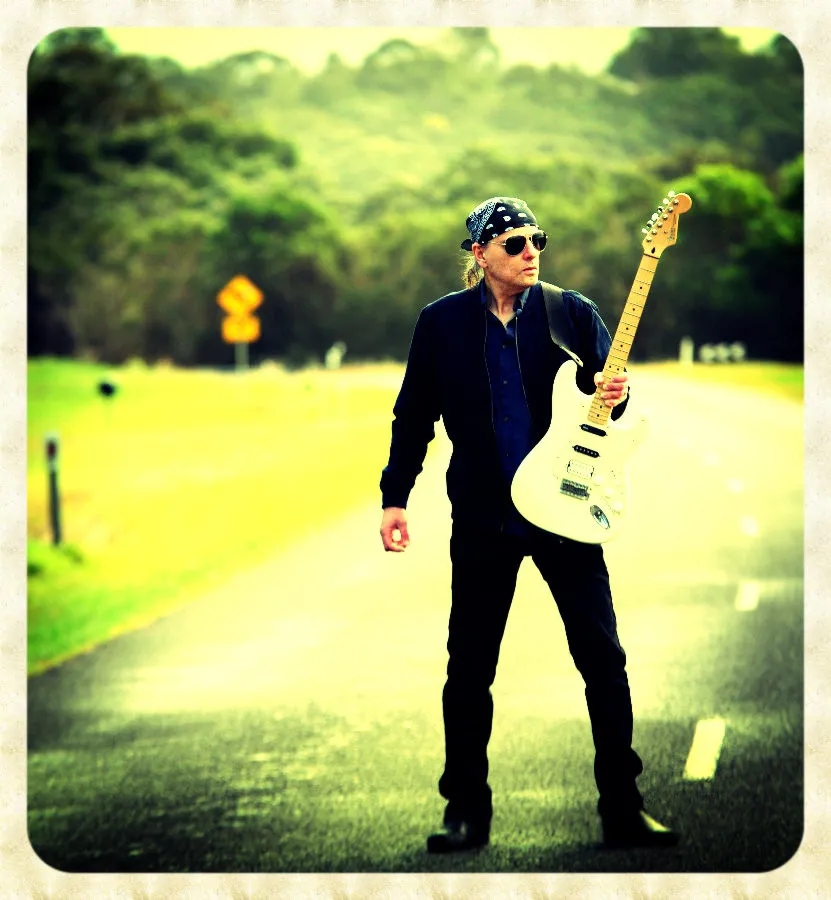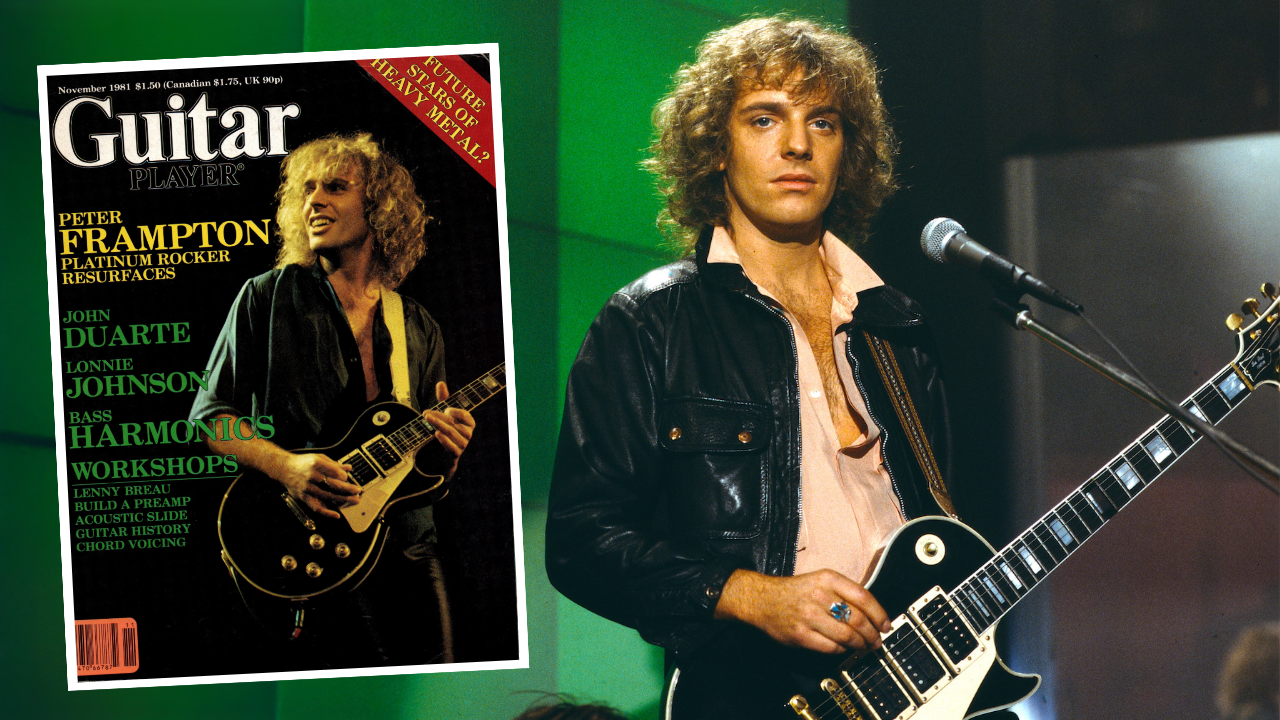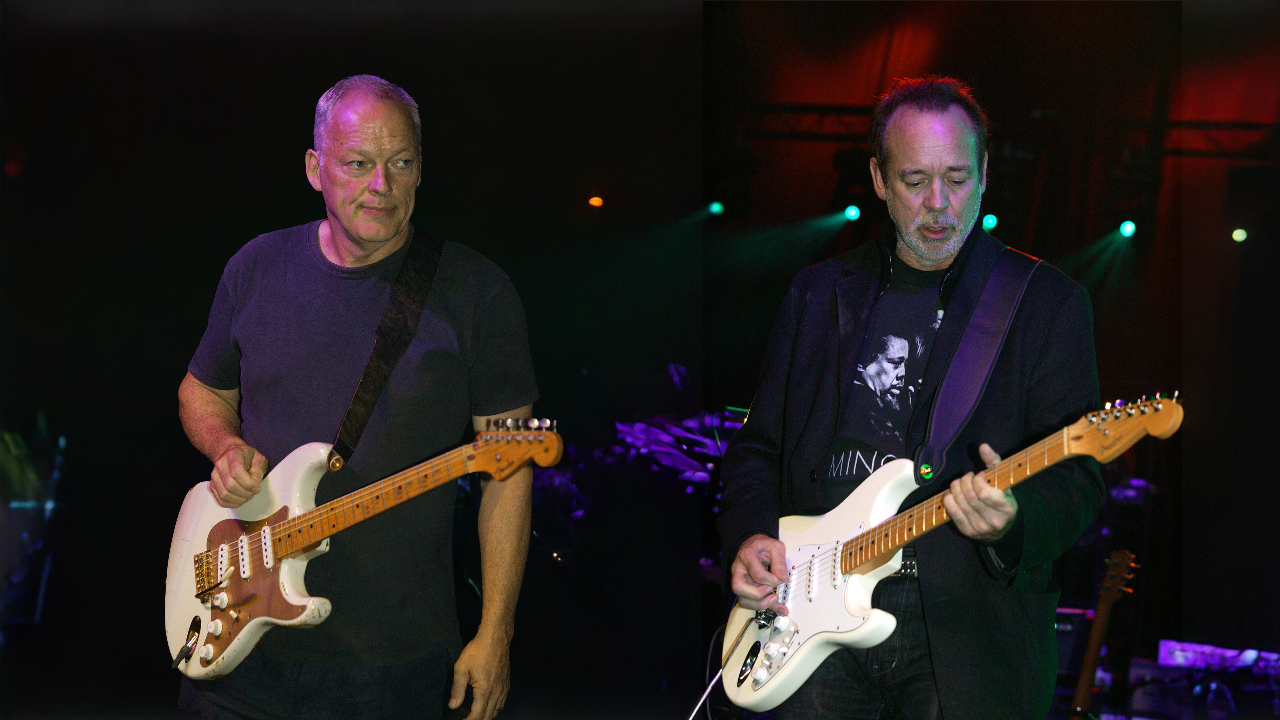Pink Floyd didn't mean anything to him, he told Thin Lizzy he wouldn't jump around onstage and he once had an accidental top 10 hit: The career of Snowy White, rock's easiest-going guitar hero, in five songs
Blues player, session legend and "accidental frontman", Snowy White has worked with everyone from Thin Lizzy to Pink Floyd. Here are five deep cuts he considers his best.
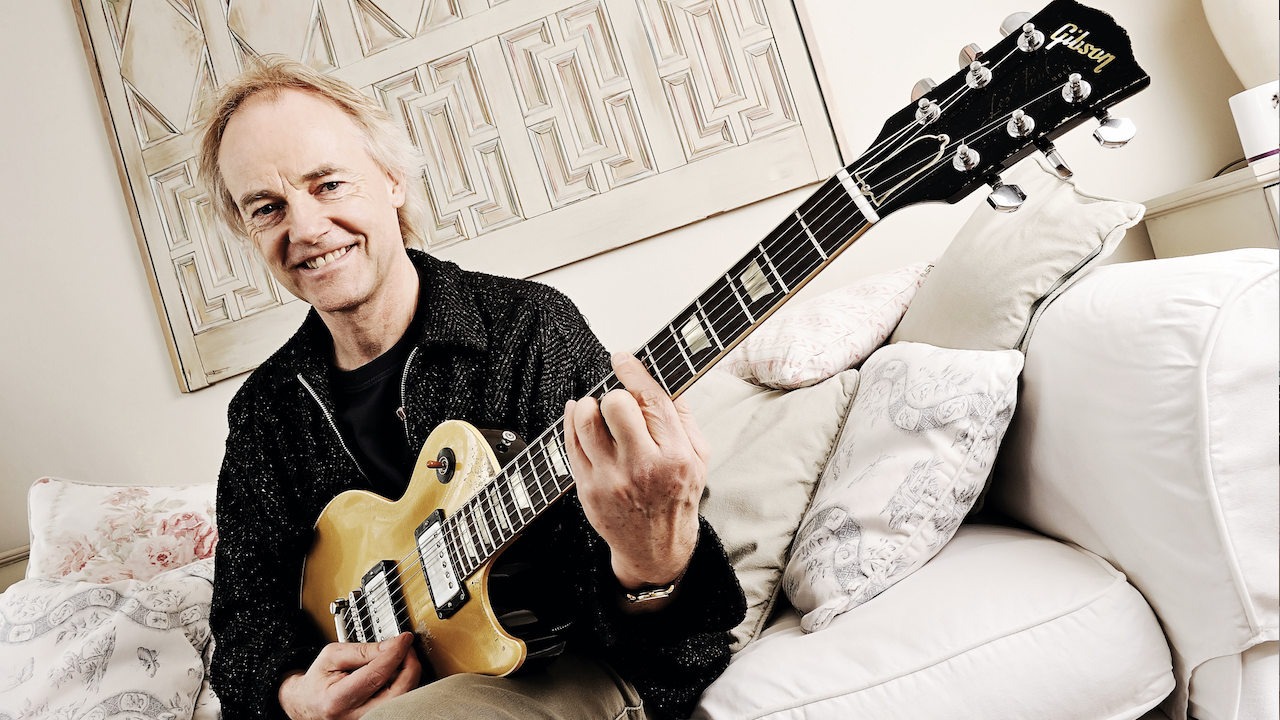
Terence “Snowy” White is one of those unassuming quiet achievers whose passion for playing blues-infused guitar music has never wavered. Having started out working on sessions, he served as a touring member for artists such as Joan Armatrading, Steve Harley & Cockney Rebel, and Pink Floyd before joining Thin Lizzy in 1980. But he soon found the gig a mixed blessing.
“There were many good things about Thin Lizzy, as they were a great band, but working with Phil Lynott was difficult,” White recalls over the phone from his home in Petersfield, England. “He’d say, ‘I’ll be there at 11 a.m. to start recording,’ but he wouldn’t turn up until 10 p.m. and expect us to work all night. I’d be thinking, They’re wasting so much money, which they probably didn’t realize, since the record company was paying for it initially but would be taking it back out of royalties.
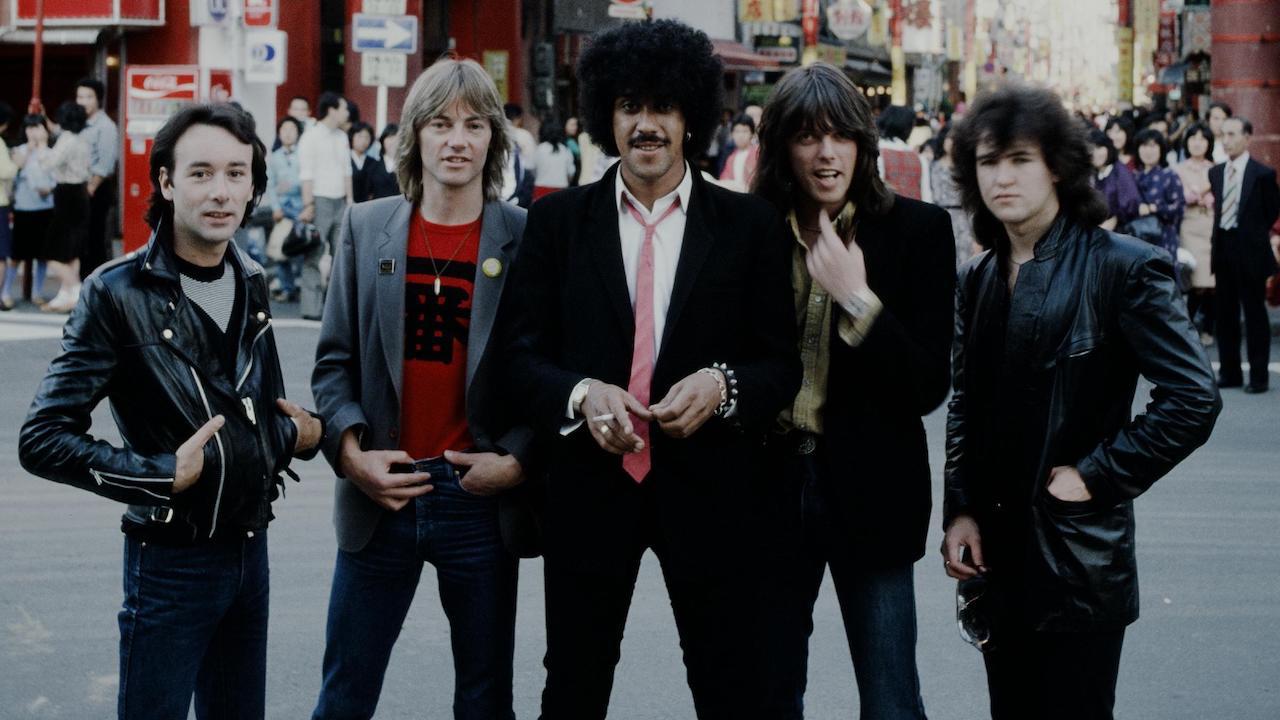
“So by the time they started working, I was tired, and I’d say, ‘I’m going home now, as it’s midnight.’ Because I knew what I had signed up for, I worked really hard at being positive, but sometimes it was quite difficult. For example, when Phil turned up to put vocals on, he hadn’t done any work on them at all, and we’d be sitting there for hours while he worked on them. Yet all he had to do was spend a couple hours getting some of the lyrics down beforehand.”
After two studio albums with the group, White exited Thin Lizzy in 1982 and began forging a successful and prolific solo career. Since his 1983 debut outing, White Flames, he’s released more than 20 solo albums. He also spent more than two decades playing guitar as part of Roger Waters’ touring band, with whom he performed around the world.
For the duration of his playing career, White’s weapon of choice has been his goldtop 1957 Gibson Les Paul, which he purchased in 1969 while in Sweden. He eventually sold it at auction in 2015 and has since played a custom copy.
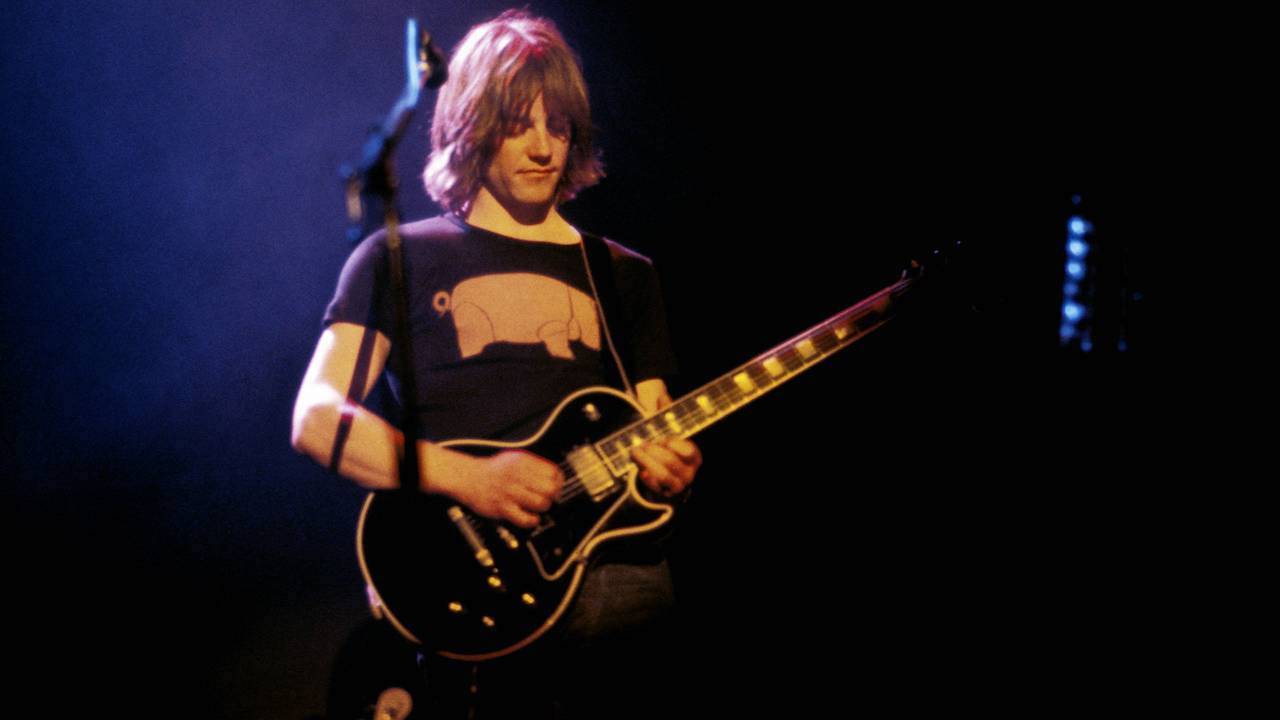
“I didn’t know the copy existed until a friend called me when I was staying at the Savoy in London during Roger’s shows at the London 02 Arena,” White explains. “He told me a Japanese guy wanted to give me a guitar that was a copy of my old one, which I was still playing at the time. So he came down to the hotel and showed it to me, and it looked rather nice — had all the scratches in the right places, et cetera.
"So I said I’d be happy to have it, and he just gave it to me! He didn’t want anything in return, not even a photo of me with it or any sort of endorsement. I didn’t use it, because I still had my old one, but when I sold that a few years later, I thought I’d give the other electric guitar a try. It doesn’t sing on the top frets like mine did, but it’s a nice guitar anyway. I’ve had a bit more work done on it — wider frets, neck shaved and so on — to make it feel comfortable for me”.
A Japanese guy gave me a copy of my old Gibson Les Paul guitar – he didn’t want anything in return!
White officially retired from live performances after a 2019 show with the White Flames in St. Petersburg, Russia, and now focuses on recording blues albums. Despite touring the world and performing in arenas and stadiums, he says his live career highlight was when he was playing small clubs.
“Back in the 1990s,” he explains, “I had a three-piece that featured two Dutch-Indonesian musicians: Juan van Emmerloot on drums and Walter Latupeirissa on bass and rhythm guitar duties. We’d play in small clubs in Europe. Sometimes a gig would feel great, because it sounded good onstage and sounded good out front with the audience, and we were on form and had great vibes.
"Everything came together, and for an hour and a half it would be wonderful. I still remember how good that felt. It wasn’t like playing in stadiums or Berlin. It was really nice.”
Pigs on the Wing – Pink Floyd (Animals 8-Track, 1977)
“I got a call from somebody to say Pink Floyd’s manager was trying to get in contact with me because the band were looking for a guitar player, and that I should give them a call.
"Pink Floyd didn’t mean anything to me, as I was a very narrow-minded blues player, so if it didn’t have blues in it, I wasn’t interested. Also, I didn’t know anything about them. But then somebody said, ‘Why don’t you ring them up? Won’t hurt to find out a bit more.’ I thought, Well, I’m not doing anything, so I called them and went to their manager’s office, in London. He told me they were in the studio around the corner at Britannia Row, recording the Animals album.
“Dave [Gilmour] took me aside and explained to me that they needed a bit of bass, some rhythm guitar, a bit of 12-string and some harmony and lead bits, and could I play them? I said yes, and then Dave asked did I want the gig? And I said, ‘Yes, but maybe we should have a jam so you can hear me play?’ Dave answered, ‘You wouldn’t be here if you couldn’t play, would you?’
I picked up a white strat, and it was Gilmour's own personal one, with the serial number of 0001
“So that was it! We went back into the control room and Roger [Waters] says, ‘While you’re here, why don’t you play a solo on this song I’ve just done called ‘Pigs on the Wing’? I said, ‘That’d be nice.’ Roger asked the engineer to put the song up, and Dave said, ‘Yes, use any of those guitars.’
"I picked up a white Stratocaster and it sounded all right. So the track played through once and I fiddled about, and then they did a take and that was the take. I got lucky and did quite a nice solo straight away. It turns out the guitar was Gilmour’s white Strat, with serial number 0001 on it.” [White’s contribution appears only on the 8-track tape release of the Animals album.]
In the Skies – Peter Green (In the Skies, 1979)
“I’d known Peter for quite a long time, and we were quite close. He called me up and said he was going to do a bit of recording — an album — as his brother Michael worked for this little record company called PVK Records. It wasn’t like a big comeback for him or anything; he was just happy to help his brother. And Peter wanted to use my band, too, so we went in and started jamming, and this was one of the tracks we came up with.
“Peter began playing the chords to the song, and I came up with the melody and played all of it just off the top of my head. Then Peter wrote some lyrics to it, as there were no vocals on any of it. The actual session was fun, because I hadn’t really played much with Peter. We had jammed a bit, but nothing much on the musical front with him.
"It was easy-going, as nobody had any particular thing that they wanted to do. I played quite a lot of the lead bits, and then Pete went away and worked on things, and later we went back in and re-recorded the stuff. There is a recording of the original jam where I’m just playing the melody on guitar.”
Chinatown – Thin Lizzy (Chinatown, 1980)
“I had bumped into Scott Gorham in the rehearsal place at Shepperton Studios [a famous film studio in Surrey, England], and he said they were auditioning guitar players next door, and did I want to come? I couldn’t go then, and they called me up a few days later and said they still hadn’t found anybody.
"So I went and had a jam, listened to one or two songs and was asked to join the band. It was the same sort of scenario as Pink Floyd. I said, ‘Yeah, all right,’ but told them I had to do The Wall shows in America with Pink Floyd first. And they said they would wait.
“So while I was rehearsing The Wall shows in America, Floyd gave me an apartment off Sunset [Boulevard] and a car, so I was able to get about and do things, and in between rehearsals with Floyd I was learning the Thin Lizzy stuff.
Thin Lizzy were a great band, but working with Phil Lynott was difficult
"I knew that [Thin Lizzy] were going to go in the studio as soon as I got back to do some recording, so I came up with a few ideas – the main riff and a few other bits and pieces for ‘Chinatown’ were my first contributions. We went into the studio and I just started playing that riff, and they went, ‘That’s great, let’s do it!’ And we built it up from there.
“That was fun to do, too! However, I’m not a rocker that jumps about onstage, which was the only problem with me doing that gig. I did explain that to them, but they said that it was all right, and that I could be the blues player in the band.
"Of course, people just wanted to hear the old songs, so it didn’t work out like that. But I enjoyed doing all those harmony guitar bits. I was using my goldtop Les Paul through a Fender Twin Reverb."
Bird of Paradise – Snowy White (White Flames, 1983)
“It was such a good feeling to get into the studio with my friends and do my own thing with this album [White Flames]. The idea for ‘Bird of Paradise’ had been in my head for a while — just the chord progression and the idea of the solo. And when I’d finished with Thin Lizzy, ‘Bird of Paradise’ was one of the tracks that I wanted to record.
"The guitar solos were all done in one take, because it was such a relief for me to just get on and play without anybody else. The only problem with that song was that I’m not a singer. I was looking for someone to do vocals, and my work on there was only intended to be a guide vocal while I searched for a professional singer.
“Suffice to say I'm not happy with my vocal on ‘Bird of Paradise.’ But when the record company heard it, they wanted to put it out as a single. I figured it would sink without a trace anyway, so it didn’t really matter.
"I went with the engineer into Ringo Starr’s studio, at Tittenhurst Park [John Lennon and Yoko Ono’s former home, which Starr lived in from 1973 to 1988], and we remixed it and sped it up a little bit, cut one of the solos and turned it into a single. The label put it out, and I thought that was probably the last I was going to hear of it.
"That is, until I was driving my car one day over Putney Bridge with the radio on and it came on, and it happened to be on the biggest afternoon show on BBC Radio 1 that millions of people listened to. The most popular DJ, Steve Wright, just kept playing it and turned it into a hit.”
Midnight Blues – Snowy White & The White Flames (No Faith Required, 1996)
“This was my first proper recording with my new White Flames band, a pickup rhythm section from Holland that were great. I’d been doing a few gigs around Europe with them, and we ended up being a band. I loved it. When it came to making the album, I went in with the attitude of not caring how long the songs were or how commercial they were. I just had some things I wanted do with the band.
"John ‘Rabbit’ Bundrick played this lovely Hammond organ part, which gave me a great bed on which to put my guitar, and it sort of inspired me. We did the whole thing in one take, straight through, including the lead guitar. And I put the vocals on later. I’m so happy with it. I thought it was an uncommercial song, because it’s long and slow and it doesn’t really go anywhere, but it’s become the most popular streamed and downloaded of all my songs.
“I’d never heard of American rapper Meek Mill until I got an email saying he wanted to sample it [for his 2016 song ‘Blue Notes’]. He just rapped over my whole exact song without doing anything, apart from speeding it up. That track sold a lot and led people who heard it to check out my original song.
“A lot of people got into me from listening to that track, and it sort of snowballed. I was so happy with that. Over the years it felt like the right place for me. Again, I used my goldtop Les Paul through a Vox AC30. ’Midnight Blues’ feels like the highlight of my recording career.”
For more on Snowy White, visit his website
Get The Pick Newsletter
All the latest guitar news, interviews, lessons, reviews, deals and more, direct to your inbox!
Joe Matera is an Italian-Australian guitarist and music journalist who has spent the past two decades interviewing a who's who of the rock and metal world and written for Guitar World, Total Guitar, Rolling Stone, Goldmine, Sound On Sound, Classic Rock, Metal Hammer and many others. He is also a recording and performing musician and solo artist who has toured Europe on a regular basis and released several well-received albums including instrumental guitar rock outings through various European labels. Roxy Music's Phil Manzanera has called him "a great guitarist who knows what an electric guitar should sound like and plays a fluid pleasing style of rock." He's the author of two books, Backstage Pass; The Grit and the Glamour and Louder Than Words: Beyond the Backstage Pass.




